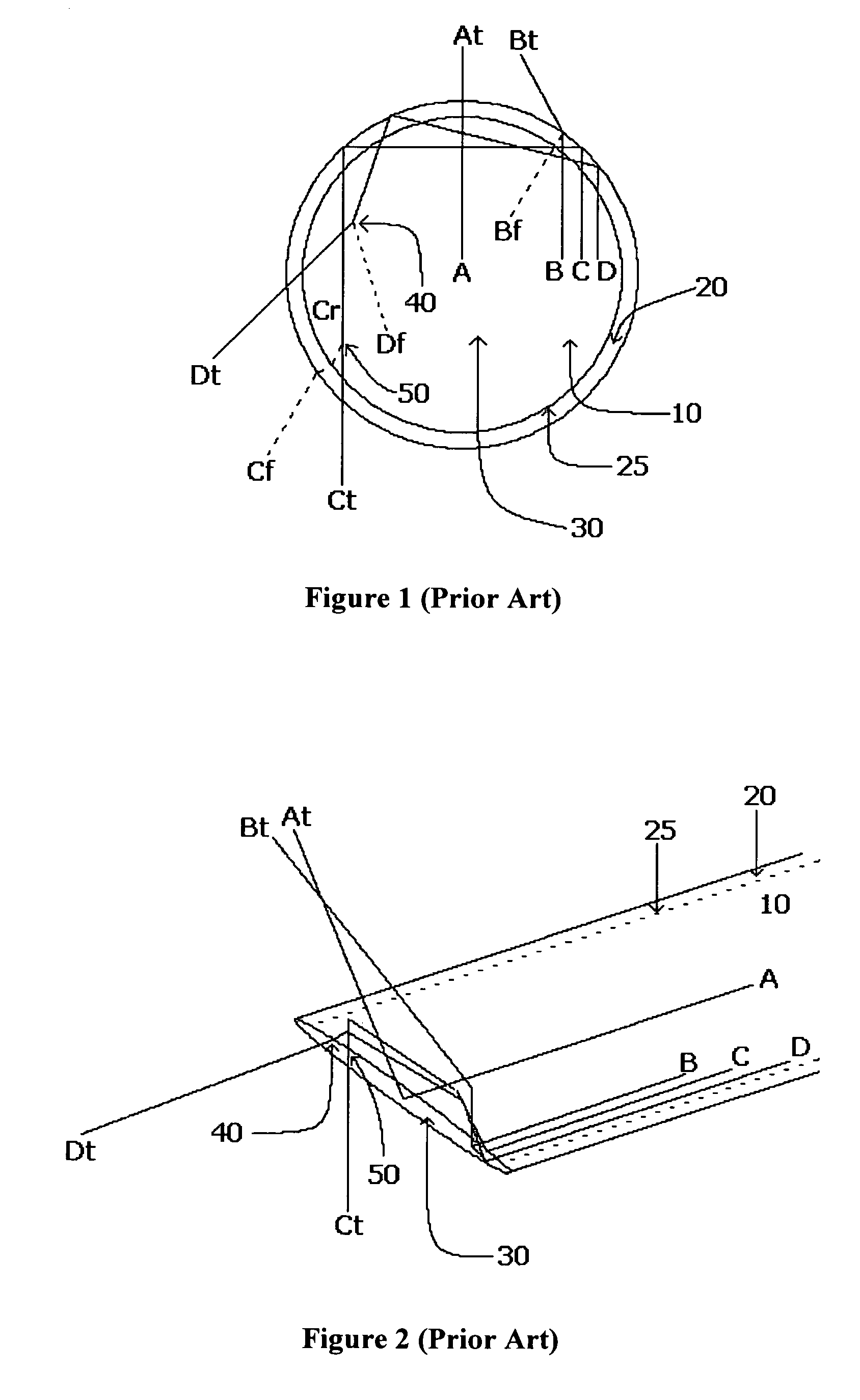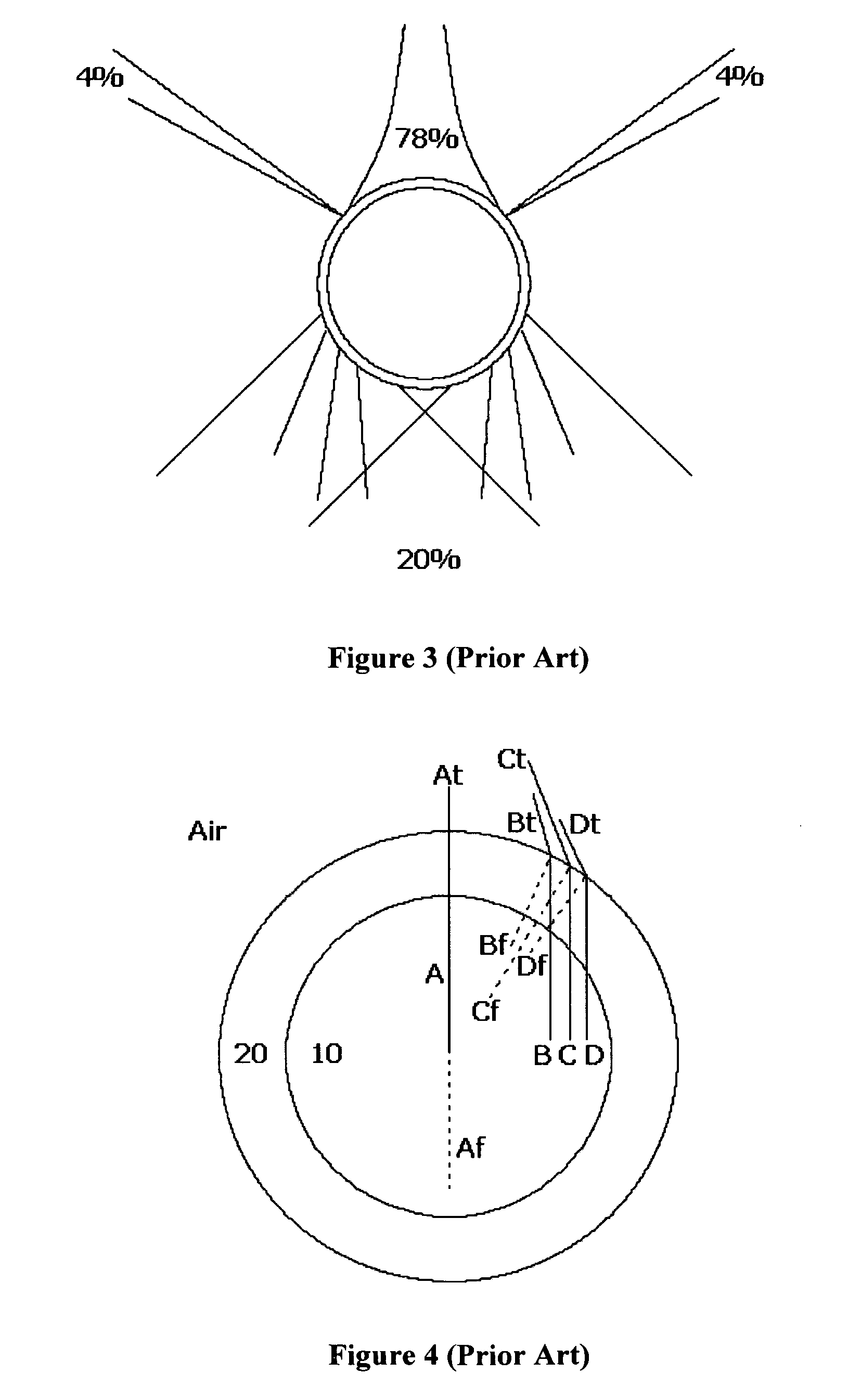Sleeved optical fiber for reduced lateral loss and method for making the same
a technology of lateral loss and sleeved optical fiber, which is applied in the field of sleeved optical fiber for reducing lateral loss and making the same, can solve the problems of large cylindrical distortion of the output beam profile, significant snell reflection and large cylindrical distortion of the impracticality of ccdr for the core diameter required in laser surgery, etc., to achieve the effect of reducing reflection and cylindrical distortion
- Summary
- Abstract
- Description
- Claims
- Application Information
AI Technical Summary
Benefits of technology
Problems solved by technology
Method used
Image
Examples
Embodiment Construction
[0036]FIGS. 1 and 2 should be referred to in unison for clarity in tracing the paths of some characteristic rays within the output tip of a standard lateral fiber. The figures depict the fate of four rays, A, B, C and D that have been conducted to the beveled fiber face 30 within a standard, 1.1 CCDR fiber where the fiber core 10 of diameter X is surrounded by fluorine-doped cladding 20 of diameter 1.1X. All rays depicted are chosen to be zero order within the transmitting fiber for simplicity. In reality the extreme cases are more extreme than depicted due to the fact that higher order (angle) rays are supported within the transmitting fiber. Ray A is centered within the fiber core 10 and represents the best-case ray for the fiber design, for reference. The angle of incidence upon the fiber sidewall for ray A is essentially normal to the plane of the circumference so that the transmitted ray At is minimally refracted, there are no reflections according to Snell's Law and Fresnel re...
PUM
| Property | Measurement | Unit |
|---|---|---|
| diameter | aaaaa | aaaaa |
| diameter | aaaaa | aaaaa |
| concentration | aaaaa | aaaaa |
Abstract
Description
Claims
Application Information
 Login to View More
Login to View More - R&D
- Intellectual Property
- Life Sciences
- Materials
- Tech Scout
- Unparalleled Data Quality
- Higher Quality Content
- 60% Fewer Hallucinations
Browse by: Latest US Patents, China's latest patents, Technical Efficacy Thesaurus, Application Domain, Technology Topic, Popular Technical Reports.
© 2025 PatSnap. All rights reserved.Legal|Privacy policy|Modern Slavery Act Transparency Statement|Sitemap|About US| Contact US: help@patsnap.com



